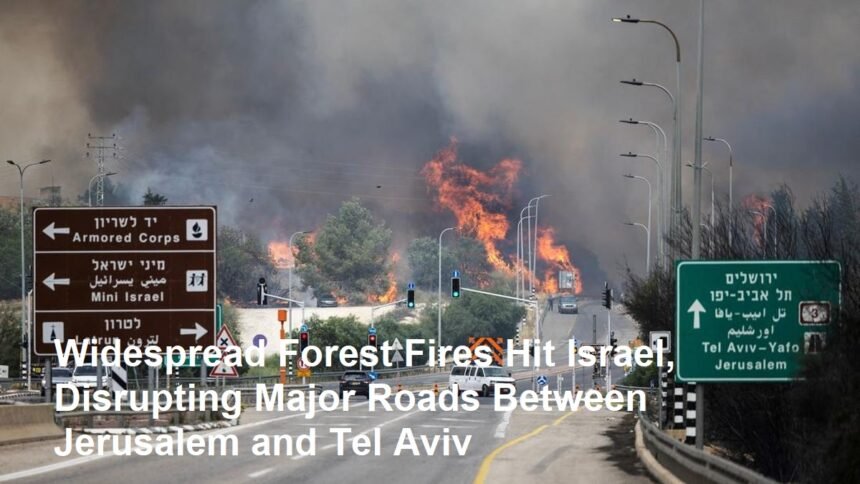On Wednesday, April 30, 2025, Israel faced severe forest fires that broke out in multiple locations, particularly affecting the area between Jerusalem and Tel Aviv. The fires forced the closure of key arterial roads, including Route 1—the main highway connecting the two cities—causing massive traffic disruptions and prompting evacuations in nearby communities.
Scale and Impact of the Fires
The wildfires spread rapidly due to dry conditions, high temperatures, and strong winds exceeding 60 miles per hour. Flames engulfed wooded areas near Jerusalem, including the hills around Latrun and Bet Shemesh, threatening residential neighborhoods and critical infrastructure.
Authorities described the fires as possibly the largest in Israel’s history. Over 160 firefighting crews, supported by 12 aircraft and helicopters, battled the blazes. International assistance arrived from countries such as Italy, Croatia, and North Macedonia, sending firefighting planes to aid Israeli efforts.
Road Closures and Evacuations
The fires led to the closure of Route 1, a vital highway linking Jerusalem and Tel Aviv, as well as other major roads in the region. Thousands of motorists were stranded, with many abandoning their vehicles and fleeing on foot or seeking alternative transport.
At least five communities near the fire zones were evacuated as a precaution. Emergency services worked to ensure the safety of residents, including vulnerable groups such as pregnant women and infants.
Health and Safety Concerns
Medical centers in the area treated over 20 people for smoke inhalation and minor burns. Seventeen firefighters sustained injuries while combating the flames. Hospitals prepared for potential increases in patients and evacuated non-critical patients to free up capacity.
Authorities warned residents to avoid open flames and be vigilant for gas leaks or other hazards caused by the fires. The Israeli Defense Minister declared a national emergency and deployed troops to assist firefighting and evacuation efforts.
Government and Military Response
The Israeli military and police played active roles in managing the crisis, establishing firebreaks and supporting ground crews. The air force continued aerial firefighting operations, dropping water and fire retardants to contain the spread.
Several Independence Day events were canceled or postponed due to the emergency. The government coordinated with international partners to secure additional resources and expertise.
Investigation and Cause
Police arrested a suspect in East Jerusalem accused of attempting to ignite fires in open fields, though the full cause of the widespread blazes remains under investigation.
Outlook and Recovery
By the following day, firefighters had made progress in containing the fires, allowing the reopening of major roads, including the Jerusalem-Tel Aviv highway. However, officials cautioned that dry weather and strong winds could still pose risks of flare-ups.
The incident highlighted the vulnerability of Israel’s forested areas to wildfires, especially during hot, dry seasons. Authorities emphasized the importance of preparedness, rapid response, and community cooperation to mitigate future disaste









